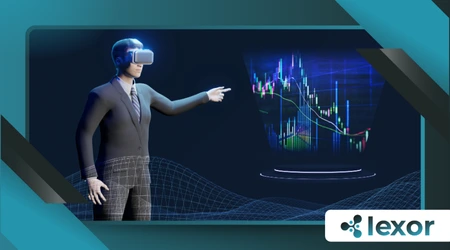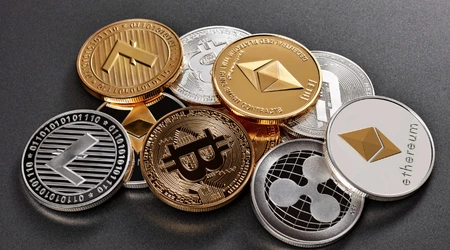The Role of Crypto in the Metaverse Economy

The role of crypto in the metaverse economy is undeniable.
As virtual worlds expand, cryptocurrencies are becoming the backbone of value creation, ownership, and trade.
By 2025, the metaverse has evolved into a sprawling digital ecosystem where billions of dollars change hands daily.
From virtual real estate to digital art, crypto is the glue holding this economy together.
But what makes this relationship so powerful? And how is it shaping the future of work, finance, and social interaction? Let’s dive deeper.
The Metaverse Economy: A Digital Frontier
The metaverse is no longer a sci-fi concept. By 2025, it’s a $1.5 trillion market, according to McKinsey.
This digital universe thrives on seamless transactions, and crypto is its lifeblood.
The metaverse economy is built on the idea of immersive, interconnected virtual worlds.
These worlds are not just for gaming or socializing; they’re full-fledged economies where users can buy, sell, and trade assets.
For instance, virtual real estate in platforms like Decentraland and The Sandbox has sold for millions of dollars, with crypto facilitating these transactions.
What makes the metaverse unique is its ability to replicate real-world economic activities in a digital space.
From virtual storefronts to concerts, the metaverse is a hub of commerce and creativity. Crypto ensures these activities are secure, transparent, and efficient.
Why Crypto Fits Perfectly – Role of crypto in the metaverse economy
Cryptocurrencies solve critical metaverse challenges.
They enable borderless payments, ensure transparency, and empower users with true ownership through blockchain technology.
One of the biggest advantages of crypto is its decentralization.
Unlike traditional financial systems, which rely on intermediaries like banks, crypto transactions are peer-to-peer.
This eliminates fees, reduces delays, and gives users full control over their assets.
Moreover, crypto’s programmability allows for smart contracts, which automate transactions and enforce agreements.
For example, when you buy a virtual item, the smart contract ensures you receive it instantly, without needing a middleman.
+ Cryptocurrency investment basics: how to start your digital portfolio
Digital Ownership Redefined (Role of crypto in the metaverse economy)
In the metaverse, NFTs (non-fungible tokens) represent assets like virtual land, avatars, and art. Crypto ensures these assets are unique, tradable, and secure.
NFTs have revolutionized digital ownership.
Before blockchain, digital assets could be copied infinitely, making it hard to prove authenticity. Now, NFTs provide a digital certificate of ownership, stored on the blockchain.
This has opened up new possibilities for creators.
Artists can sell their work directly to collectors, earning royalties every time their art is resold.
Similarly, gamers can own in-game items and trade them across platforms, thanks to crypto’s interoperability.
Decentralized Finance (DeFi) in Virtual Worlds
DeFi protocols are integrating into the metaverse, allowing users to earn interest, borrow, and lend virtual assets. This creates a self-sustaining economy.
For example, in platforms like Aavegotchi, users can stake their NFTs to earn interest or borrow crypto against their virtual assets.
This mirrors real-world financial systems but operates entirely within the metaverse.
DeFi also enables new business models.
Virtual businesses can raise funds through token sales, and users can invest in these projects, earning returns as the business grows.

Interoperability: The Key to Growth
Crypto bridges different metaverse platforms.
Imagine using Bitcoin to buy a virtual item in Decentraland and selling it for Ethereum in The Sandbox.
Interoperability is crucial for the metaverse’s growth. Without it, each platform would exist in isolation, limiting the economy’s potential.
Crypto solves this by providing a universal medium of exchange.
For instance, projects like Polkadot and Cosmos are working on cross-chain solutions, allowing assets to move seamlessly between blockchains.
This will make the metaverse more interconnected and user-friendly.
+ Blockchain Technology Explained: A Beginner’s Guide 2025
Challenges and Opportunities (Role of crypto in the metaverse economy)
Regulation and scalability remain hurdles.
However, innovations like layer-2 solutions and CBDCs (central bank digital currencies) are paving the way for smoother integration.
Governments are still figuring out how to regulate crypto in the metaverse.
While some countries have embraced it, others are cautious, fearing issues like money laundering and tax evasion.
Scalability is another challenge.
As the metaverse grows, so does the demand for fast, low-cost transactions.
Layer-2 solutions like Polygon are addressing this by processing transactions off-chain, reducing congestion on the main blockchain.
Table 1: Crypto Use Cases in the Metaverse
| Use Case | Description | Example |
|---|---|---|
| Virtual Real Estate | Buying/selling land in virtual worlds | Decentraland, The Sandbox |
| NFT Marketplaces | Trading digital art, collectibles, and assets | OpenSea, Rarible |
| Play-to-Earn Games | Earning crypto through gameplay | Axie Infinity, Gods Unchained |
The Future of Work in the Metaverse
Crypto enables new income streams.
From virtual real estate brokers to NFT artists, the metaverse economy is creating jobs that didn’t exist five years ago.
For example, play-to-earn games like Axie Infinity allow players to earn crypto by completing tasks and battling other players.
Some players in developing countries have turned this into a full-time job, earning more than their local minimum wage.
Similarly, virtual real estate agents help users buy and sell land in the metaverse, earning commissions in crypto.
These jobs are not just lucrative; they’re also accessible to anyone with an internet connection.
Table 2: Top Cryptos Powering the Metaverse
| Cryptocurrency | Role in the Metaverse | Market Cap (2025) |
|---|---|---|
| Ethereum (ETH) | Hosting NFTs and smart contracts | $500 billion |
| Decentraland (MANA) | Native currency for virtual land transactions | $10 billion |
| Axie Infinity (AXS) | Rewards and governance in play-to-earn games | $8 billion |
The Social Impact of Crypto in the Metaverse
Crypto democratizes access.
Anyone, anywhere, can participate in the metaverse economy, breaking down traditional barriers to wealth creation.
In developing countries, crypto provides financial inclusion.
People without access to banks can now earn, save, and invest in the metaverse. This is particularly impactful in regions with unstable currencies or limited job opportunities.
Additionally, crypto fosters community building. DAOs (decentralized autonomous organizations) allow users to govern platforms collectively, ensuring decisions are made democratically.
Read more: How to Encourage Creativity in Kids Using Technology.
Sustainability Concerns
Energy consumption remains a hot topic. However, proof-of-stake blockchains like Ethereum 2.0 are reducing the carbon footprint of crypto transactions.
Critics often point to Bitcoin’s energy usage as a drawback. However, newer blockchains are prioritizing sustainability.
For example, Algorand uses a pure proof-of-stake mechanism, which consumes minimal energy.
The metaverse itself can also promote sustainability. Virtual events reduce the need for travel, lowering carbon emissions.

The Role of AI in the Metaverse Economy
Artificial intelligence is another key player in the metaverse. AI-driven avatars, personalized experiences, and automated services are enhancing user engagement.
For instance, AI can analyze user behavior to recommend virtual products or services.
This creates a more immersive and tailored experience, driving economic activity.
Moreover, AI can manage virtual economies, balancing supply and demand for digital assets. This ensures stability and growth in the metaverse.
Conclusion: A Symbiotic Relationship
The role of crypto in the metaverse economy is transformative. Together, they’re reshaping how we interact, trade, and create value in a digital-first world.
By 2025, the synergy between crypto and the metaverse will only deepen, unlocking opportunities we’ve yet to imagine. From decentralized finance to virtual jobs, the possibilities are endless.
The future is here, and it’s decentralized.
Frequently Asked Questions (FAQs)
1. What is the role of crypto in the metaverse economy?
Crypto enables secure, transparent, and borderless transactions in the metaverse. It powers digital ownership, decentralized finance, and interoperability between virtual worlds.
2. How do NFTs work in the metaverse?
NFTs represent unique digital assets like virtual land, art, and avatars. They are stored on the blockchain, ensuring authenticity and ownership.
3. Can I earn money in the metaverse?
Yes! Through play-to-earn games, virtual real estate, and NFT trading, users can generate income in the metaverse.
4. Is the metaverse economy sustainable?
While energy consumption is a concern, innovations like proof-of-stake blockchains are making the metaverse more sustainable.
5. What are the risks of investing in the metaverse?
Risks include regulatory uncertainty, market volatility, and technological challenges. Always do thorough research before investing.
6. How does DeFi work in the metaverse?
DeFi protocols allow users to earn interest, borrow, and lend virtual assets, creating a self-sustaining economy within the metaverse.
7. What is the future of crypto in the metaverse?
Crypto will continue to play a central role, driving innovation and economic growth in the metaverse.
